My name is brian Campbell (lowercase “b”) and I am a Ph.D. candidate and part-time lecturer at Dalhousie University in Halifax, Nova Scotia, in the Department of Sociology and Social Anthropology. I am also co-owner of the eBay-oriented business, East Coast Toys and Games, which some readers in Atlantic Canada may recognize. In my spare time, I am an avid comic collector and have spent the past two years (give or take) engaged in a research project about the history of Canadian comic books with two colleagues. However, rather than emphasizing the WECA and FECA periods that Ivan Kocmarek has spent the past several years writing about, my focus has been on the Canadian Silver Age. This introductory column is my attempt to set the stage, so to say. My purpose here is to provide a bit of background into how I define the Silver Age, how I came to be interested in this era of comics and why you should be paying attention if you are interested in Canadian comics.
What is the Canadian Silver Age?
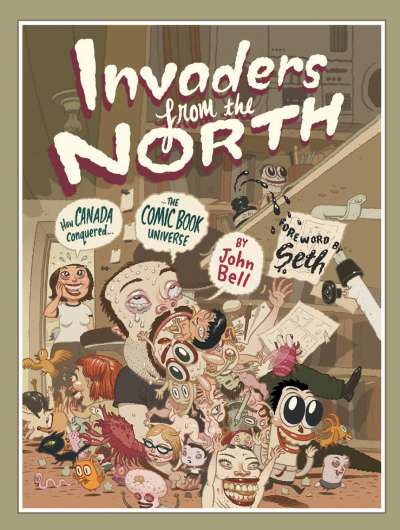
In his book, Invaders from the North, John Bell presents the Canadian Silver Age as taking place from c. 1974-1988, beginning with the publication of Orb and Captain Canuck and ending with the merger of Aircel with Malibu Comics, as a result of the black and white comics bust of the late-1980s. Bell’s reasoning for delineating the era in this way is justified: this was the first time since the end of the Golden Age that Canadian comic series had consistent national distribution. Bell’s book covers the cultural history of Canadian comics from the very beginning until the year it was published (2007) and he does discuss other eras of Canadian comic publication post-FECA and pre-Captain Canuck in some detail. However, I find this definition far too rigid and limiting for my purposes. Instead, I have long considered the Canadian Silver Age to begin in the early-1960s with the publication of giveaway comics by Toronto’s Ganes Productions (and shortly thereafter Halifax’s Comic Page Features/Comic Book World) and ending around 1990 with the first issue of Drawn & Quarterly.
I justify delineating the Silver Age in this way because it helps me to categorize different types of comics and comic book trends that existed in Canada during a twenty-five-year period that are not necessarily mutually exclusive. This is not a criticism of John Bell. Instead, I consider Bell’s work in both Invaders from the North and his earlier book, Canuck Comics, to be the most important roadmaps in existence for people interested in Canadian comics from any era. Indeed, one of the most important tools available to researchers of Canadian comics is the John Bell Collection at Library and Archives Canada. Anyone who has ever aspired to research or collect Canadian comics should familiarize themselves with Bell’s work on the subject. It is my goal to build on and contribute to the body of knowledge that Bell has created and organized for us.
Why did I start collecting and researching these books?
Like many readers of Comic Book Daily, I have followed Ivan Kocmarek’s “Whites Tsunami” blog with great interest for several years. As a child of the 1980s and 1990s, I was like many other young boys in Canada insofar as I read comic books, particularly Spider-Man, X-Men, Batman, Spawn and related titles. Then the market crashed, the few local comic shops that existed in my rural Nova Scotian region (the Annapolis Valley) all closed and I moved on to other hobbies and interests.
A few years ago, I dug out my “old” comics and slowly started to regain an interest in the hobby. However, I really didn’t dabble too much in this until I found myself with the opportunity to purchase a sizeable Golden Age collection in 2013. The collection had a myriad of westerns, romance, funny animal and other comics, but I was most interested in the DC and Timely superhero comics, as well as the horror books that were in the collection. As I went through everything, there were a couple of funny looking books that had characters I had never heard of before, such as: Freelance, Dr. Destine and Commander Steel. I sold these books on eBay rather quickly in order to help pay for the lot so that I could justify keeping all of the Batman and Wonder Woman books for my fledgling collection. My eBay inbox was all of a sudden inundated with messages from people asking if I had any more of these “Canadian Whites.” What were they talking about?
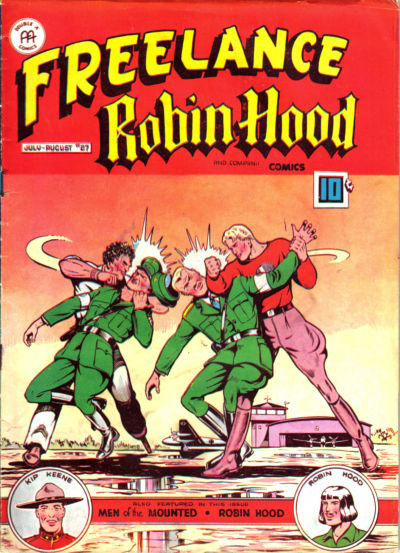
In retrospect, I should have done my homework before selling those late run issues of Freelance and Grand Slam. If I had known just how special those books were, I would have sold the Batman comics instead. Indeed, it took me three or four years to re-purchase the books I had sold in 2013. As I started to learn about WECA and FECA through Ivan’s blog, I changed my collecting emphasis. Unfortunately, I was late to the party—noted WECA collector Stephen Lipson would probably say that I was late by ten years! By the time that I started trying to purchase these Golden Age gems, they were often well outside of my budget. When they were affordable, I would be outbid at the last minute even though I had a pool of money set aside for such purchases. I tried to switch my emphasis to buying FECA (it was cheaper), but the reprints of American comics did not have the same cachet or appeal due to the lesser quality and smaller page count resulting from comic stories and other materials being omitted from the American originals. I was starting to become frustrated by my desire to collect WECA comics and the fact that my collection was not growing.
I reached out to Ivan Kocmarek and he suggested that I should read John Bell’s works. I did so and found myself enamoured with the many Canadian comics from the 1960s through 1980s that I thought I might have an easier time finding. I quickly realized that the list in Canuck Comics was incomplete (as it had been published in 1986, prior to the end of the Silver Age and during a time when the internet was not at everyone’s fingertips, making his research project much more difficult than it would be today). In Invaders from the North, Bell mentions a large number of comics and creators as he weaves his readers through the cultural history of the subject, but as I went through the chapters I found myself confounded by how I could not find any information about many of the comics or creators that he names in the book. So, I did what any researcher would do. I started digging.
One of the beautiful things about the internet is the ability to connect easily with like-minded individuals. Approximately two years ago, I posted several advertisements on the CGC forums looking for Canadian books from the Silver Age. It took a while, but eventually I was contacted by Dan Bryantowich, a collector of Underground Comix based in Ottawa. He had more knowledge on the subject of Canadian Undergrounds than I did at the time, but was also having difficulty finding information about many comics that he had been looking for. A couple of months later, we encountered another like-minded individual on the forums, Victor Marsillo, a collector from Pennsylvania. Victor is also quite interested in Undergrounds, but collects with a foreign emphasis (particularly with a focus on British comics, but also with a breadth of knowledge about Canadian Silver Age titles).
The three of us have spent the past two years looking for and cataloguing Canadian Silver Age comics with a “fine tooth comb.” In addition to John Bell’s work, we have gone through the Fogel and Kennedy guides, the Grand Comic Database, various fonds at universities throughout North America, Worldcat, and defunct blogs such as Comic Syrup Press and The Canadian Comics Archive in order to compile our list. We have also looked at Quebec comics in some detail, relying especially on the work of Mira Falardeau and Sylvain Lemay. The three of us have also attempted to track down comic book creators, with some success, in order to learn more about some of these mysterious comics. Dan and I even took a trip to Library and Archives Canada in Ottawa in May, 2017, to take a look at hundreds of the comics included in the John Bell Collection. We have now reached the point where we have catalogued over 2000 comic books that were published in Canada during this era. We still learn about “new” comics from time to time, but I feel that the “discovery” phase of our research is coming to an end.
The Purpose of “Forgotten Silver”
One of the exciting things about the Canadian Silver Age is that, despite consisting of over 2000 comics, very few of these comics are remembered today outside of niche circles. Some characters, such as Captain Canuck, Northguard and Cerebus, are still widely remembered and appear in comics that are currently on the stands at your local comic shop (LCS). Other characters, such as Katherine Collins’ (then Arn Saba’s) Neil the Horse and Sylvie Rancourt’s Mélody have recently found new life in collected volumes. The same can be said for Dr. Ian Brodie’s collection of Paul “Moose” MacKinnon’s Old Trout Funnies.
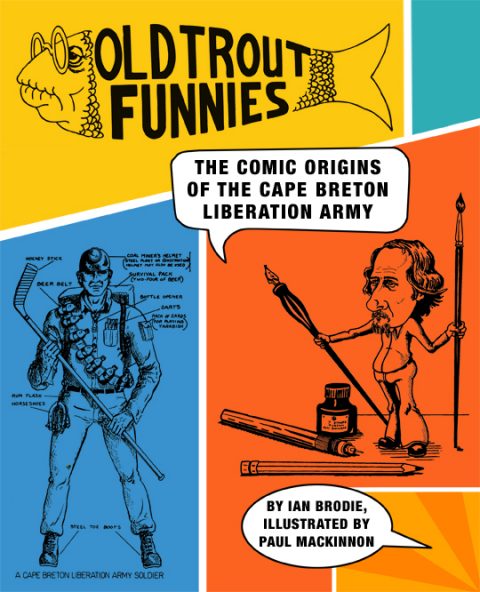
Beyond this, numerous Silver Age creators have been inducted into the Canadian Comic Book Hall of Fame. The following inductees (in order of induction) all published their own “home-grown” comic books in Canada during the era (with many also having success internationally): Rand Holmes, Owen McCarron, Dave Sim, Jacques Hurtubise (aka ZYX), Gene Day, Pierre Fournier, Stanley Berneche, John Byrne, Real Godbout, Ken Steacy, Richard Comely, Dave Darrigo, George Freeman, Serge Gaboury, Deni Loubert, Jean-Claude St. Aubin, Chester Brown, Katherine Collins, Ty Templeton, James Waley, Mark Shainblum, Gabriel Morrisette, Julie Doucet, Stuart Immonen, Jacques Goldstyn (aka Boris) and David Boswell.
In many ways, this is a “who’s who” of significant Silver Age creators. The list represents some of the most important contributors to the Canadian comics community and highlights both French and English scenes. However, there are many additional creators who have yet to be recognized by the Shuster Awards, have not had their work reprinted or who have not had their creations remain in the popular imagination of contemporary comic book readers. Examples include (in no particular order), Jacques Boivin, Orville Ganes, Terry Edwards, Art Cooper, Vincent Marchesano, Dave Geary, Derek Carter, bpnichol, Colin Upton, Peter Dako, Barry Blair, the members of FreeKluck (Frank McTruck, Jack D. Zastre, Roldo Odlor, Basil Hatte and Bobby Stahr), members of the seminal punk band D.O.A., Martin Vaughn-James, Nick Burns, Dean Motter, Kenny Moran, Terry Fletcher, André Philibert and Tibo (aka Gilles Thibeault). This list barely scratches the surface of the many Canadian artists and writers who contributed to the growth of the industry during this era.
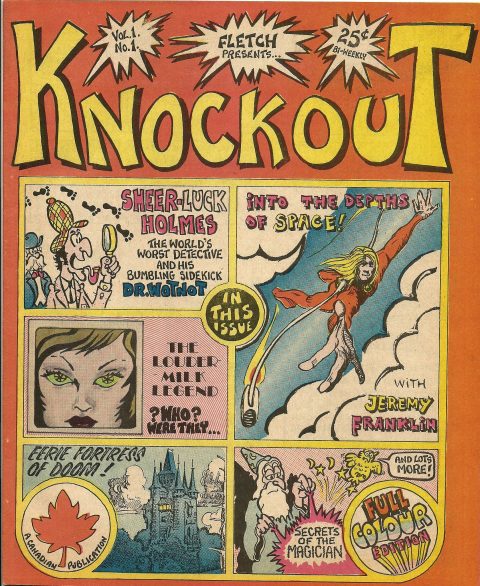
The comics, characters and fandom from the Silver Age run the entire gamut of genres and movements that were happening south of the border. From educational giveaways to undergrounds and everything in between, Canadian comics published from the early 1960s to c. 1990 constitute a significant part of our history. Yet, this is a history that is filled with gaps, is slowly being forgotten and is, hence, ready to be shared.
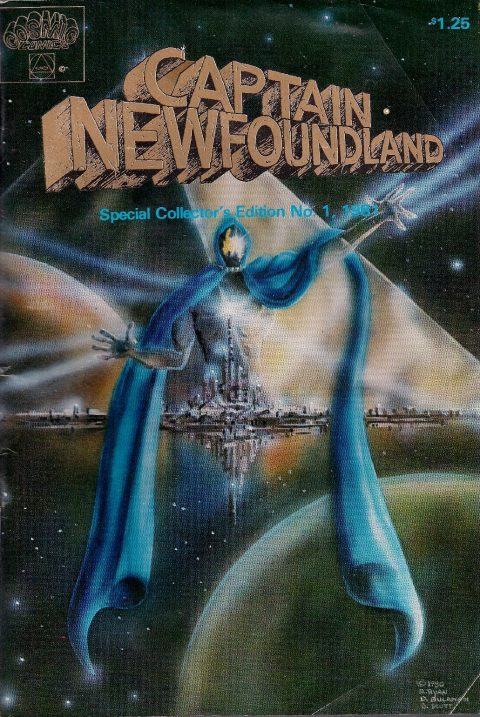
Why “Forgotten Silver”?
Dan, Victor and I never came up with a name for ourselves, but I have come to think of our project as “Forgotten Silver.” Thanks to the interest of both Ivan Kocmarek and Walter Durajlija in our project, my goal is to develop a column for Comic Book Daily that emulates Ivan’s “Whites Tsunami” work. Ivan’s template is ideal for this work because its loose format enables him to tackle a myriad of topics from different angles. My mission statement is twofold: a) to provide a cultural history of these comics and to situate them in their historical context; and, b) to provide collectors with the tools they need to identify the comics that I will be talking about. As such, I endeavour to present the research that we have been working on in ways that cater to the specific context of the topic at hand. One month, I might delve into a specific creator’s work. Another month, I might look at a single comic or a specific series. Other entries might be topical and still others might look at movements rather than specific comics or creators. That said, the foundation still needs to be laid. Next month, I will break down the various strains with the Canadian Silver Age and will provide an introductory look at the collectible nature of these comics.
Cheers, brian Campbell

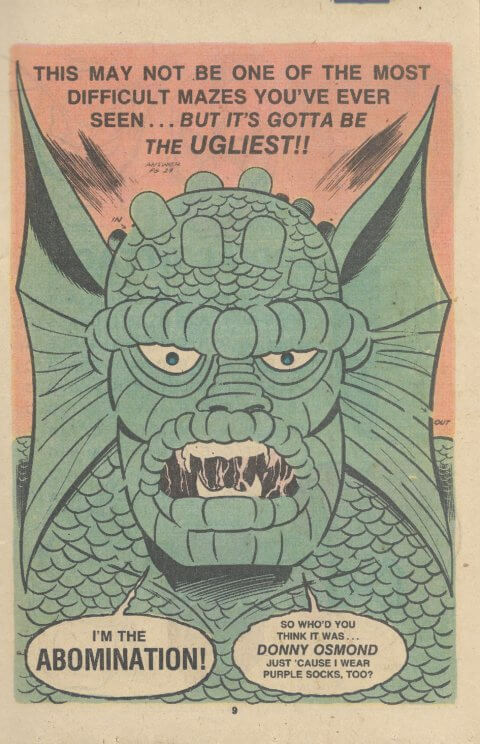
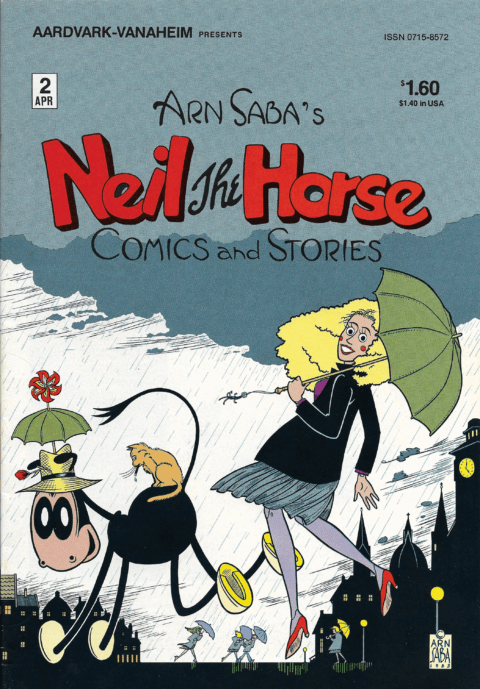
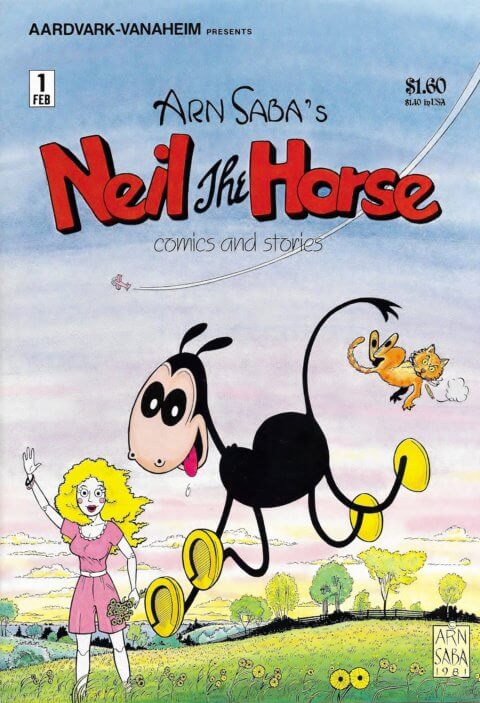
Great inaugural column brian. I wish you a long run exploring and illuminating this neglected era in Canadian Comics. I very much agree with you about nudging John Bell’s valuable first definition of Canada’s Silver Age of Comics a bit further backwards. Comic Book Daily is quickly becoming the place to go for understanding the history of Canadian comics. I hope that you will consider looking at Canadian comic fanzines, as well, as part of your examination. Welcome on board and I very much look forward to reading your subsequent columns.
Great first post Brian. this is a topic near and dear to my heart. I too started too late to realize the significance of all those weird “Canadian Whites” that I saw years ago thrown into the dollar bin at Memory Lane in Toronto. While I do have a decent collection of the WECA books, including the much sought after Nelvana compilation, the subsequent price jumps on this material have put them out of reach of my retirement budget. A few years ago, having had my own stint of publishing minis and involvement in Quadrant, Caliber Presents, Negative Burn and others, I decided to look at some of the creators of these low-budget black and white minis in the ’80s. I now have a nice collection of minis by Chester Brown (Yummy Fur), Colin Upton (Famous Bus Rides, Rubby Comics and many more) and John MacLeod (Dishman) and have conducted interviews by Email with all three creators. I also have an archive of my own mini comics work in Bootleg Comics And Stories. I had hoped to include Julie Doucet in my research as well, but her minis are almost impossible to come by and she no longer seems to have an interest in comics, having turned her hand to fine art. I would be happy to share any information I have with you, including copies of all three interviews. Just get in touch with Ivan and he will give you my contact information. I too have felt that this is a sadly neglected period of Canadian comics in general and the minis especially. I look forward to more of your insightful and entertaining columns in the future! Keep up the great work…and thank you!
cheers, mel
Hi, Brian. Fascinating read. There is a lot of that stuff. As direct market came about everyone could become a creator. They were all over the place and ranged in quality from “so bad I can hardly believe it” to “so good I can hardly believe it”.
Dean Motter lived in Toronto for a time, but is from the USA. New people are added to the Hall of Fame every year. Every year we’ve strived to have era representation, and have a floating twenty-five year rule for inclusion (that is first published work must have been at least 25 years before the award year). The class of 2019 will be 1994.
Nice debut column … looking forward to your future entries in this series! BTW, one of those folks you listed in the comic creators that the Joe Shuster Awards have yet to recognize as a H of F recipient, DEAN MOTTER, is actually American and while I was still with the awards we were very close to inducting him but he made it clear to us, while he was quite honoured by the gesture, he was not Canadian (though he lived here for quite a while and accomplished quite a bit in both the comics and the music industry!) … anyway, he’s still an honourary Canadian in my eyes, an amazing talent and a good friend!
Thanks for your comments, everyone. I’m looking forward to sharing our research here on Comic Book Daily moving forward. Allow me to address each of your comments:
1. Ivan, I agree that this site is becoming the go-to place for the history of Canadian comics. Indeed, this has always been the place that I felt would make the most sense to present the material that Forgotten Silver will cover. Canadian fanzines are a significant part of the era and I will cover them as time goes on. Dan, Victor and I have debated what constitutes a fanzine numerous times over the past couple of years and we have essentially agreed to disagree about our various typologies. Some fanzines are almost entirely text-based (such as Media 5, Melting Pot and CANAR) and others are entirely comics based (such as the output from Spectrum). I foresee many columns about this material in my future.
2. Mel, I would love to discuss some of the material you mention with you and, hopefully, Ivan can put us in touch. Minis are part and parcel of the SA. Snore Comix # 2 from 1970 may be the first mini published in Canada. Soon after, Art Cooper and Vincent Marchesano published many minis during the early 1970s. Most of FreeKluck’s stuff from the early 1980s were also minis. By the time that Colin Upton, Chester Brown and John MacLeod started producing their own comic series in the mid-1980s, minis had become ubiquitous. I happen to have a small number of Julie Doucet’s original minis in hand and I agree that they are quite rare. The same is true for minis more generally. Luckily, several of these series were reprinted in the late 1980s/early 1990s, which makes them much more accessible than they would be otherwise.
3. Ron, I agree that the direct market played a major role in the ability for everyone to become a creator. I also think that emerging photocopying technology played just as important a role (at least for those people making the minis that Mel mentions). Prior to the direct market, most SA comics creators were lucky to have any distribution outside of the region where they lived. Similarly, photocopiers allowed for would-be creators to make things cheaper and in greater quantity than people who were previously experimenting with mimeographs. There is a wide range of content and quality within the Canadian SA. I plan to cover the good, the bad and the ugly.
4. piqueproductions, I was wondering if anyone would pick up on my addition of Dean Motter to my quick list. I am aware that he is not Canadian. However, he played a role in the Toronto and London, ON scenes in the 1970s to the extent that Bill Paul’s Media Five published his comic, Andromeda, in 1974. He continued to contribute to the Silver Snail’s Andromeda series and, perhaps most importantly in the Canadian context, created Mister X. The man also won a couple of Juno awards for his album covers before moving back to the USA circa 1990. One of the things that I find curious and frustrating is where to draw the line between what is and is not a Canadian comic. I do have some criteria that help me to gauge this, but this is not perfect. In my opinion, only half of these criteria have to be met for something to be Canadian: a) the creator is Canadian; b) the work was created in Canada; c) the work was published in Canada; d) the work has a Canadian focus. The abovementioned work by Motter fit criteria b and c, but not a and not necessarily d. As such, I consider these works to be Canadian, but would not consider his work with DC (such as The Prisoner) to fit said criteria. This is still a typology that needs work, but it works the other way too: Todd McFarlane did not publish comics that fit this criteria and John Byrne only did when he was a university student in Alberta. Most of McFarlane and Byrne’s comics only fit criteria a. In fact, I have a difficult time thinking of Alpha Flight as being truly Canadian despite fitting two of the criteria I present above.
Thanks again for your comments, everyone. I look forward to many fruitful discussions as I develop Forgotten Silver on Comic Book Daily!
Cheers,
brian
This was ultimately why the Joe Shuster Awards decided to focus on the works of Canadian creators, as opposed to just being Canadian Comics Awards. If you are a Canadian citizen, or a permanent resident at the time your work was created, you are eligible for consideration – unless you request omission as some have (like McNiven). If you never had residency status, or renounce your citizenship (as Byrne did), you are not eligible for consideration. I agree with the reasoning up to 1990 Motter was a resident but he has asked not to be included in the Hall of Fame. The Hall of Fame Committee could choose to trump that, as they did with Byrne – they felt it was important to Canadians that he be recognized in this matter, and even then Byrne was fine with it so long as his work after getting US citizenship was not to be considered.
Hi Brian . I too am looking forward to more of your articles on this era. I have a relatively small collection (less than 50 in this era) that looks minuscule compared to my other Canadian books and even more so if there are 2000 issues published in this time period. That’s about 50% of my estimation of WECA/FECA era books and a lot more than I expected there was considering how few I’ve seen.
I can’t wait to see a book or a checklist of these issues. It would be nice if you could even post here portions of a checklist , like all known titles starting with “A” in your next article here, “B” the next one etc, if you have no plans to publish something like that in a book or on a website.
In your research have you talked to a guy named Mark Joseph McLaughlin? He was going to school here locally about 5 years ago and did a research paper and a video presentation you might be interested in if you haven’t seen it. I sent him a second copy of Captain Enviro I had and
his article is available online if you haven’t read it.
Keep up the good work!
Threw out a bunch of stuff back in the early 90’s but hung on to a few things. Like the Knockout comic you showed in your article, as well as a few Collectors Dreams with artwork by Ken Stacey. The Knockout issues I have also have original strips from British comics such as The Flying Fortress from the Thunder comic, and Spellbinder from Lion and Thunder. Today I would refer to these publications as Pro-Zines, in so much as they were literally professionally type production rather than the one or two man fanzines being produced also at the time. I do believe however in addition to Canadian publications such as these two, Canadian Fanzines such as Canazine, Dark Fantasy, and Comicanada alongside others should also perhaps be included. Namely because zines such as these featured a lot of Amastrips by peoplpe like Mauro Martini, Ed Reece, Vince Marchesano, Ralph Alfonso, Gene Day and others.
Kevin,
Thanks for both of your posts and for sharing some of the protocols that you folks have in place regarding the Shuster Awards and the Hall of Fame (HOF). The 25 year waiting period is entirely reasonable and not unlike some other HOF waiting periods. I had no idea that Dean Motter had asked to be excluded from Hall of Fame consideration, so thank you for clarifying. Given that you are the director of the Shusters, I really appreciate your comments and insights. One of the things that I have come to love about Comic Book Daily is that the comments sections often become meetings of the minds between some of the many interesting comics people in Canada. I am delighted to make your acquaintance.
I want to make it entirely clear that in name-dropping the Shuster Awards and the HOF that no criticism was intended. In fact, I hold the institution in the highest regard. I have friends that who won or been nominated for the Kremer award, as well as various acquaintances who have also been nominated or who have won creative awards over the years. I see both the awards and HOF as important ways to recognize Canadian creators, publishers and even shops who deserve veneration, but who would not receive such praise without the Shusters. Looking at the list of award winners and HOF inductees, all are deserving. I am personally thankful that French creators have received these honors because it is easy for anglophones (such as myself) to overlook them when talking about Canadian comics in general. My intention in mentioning the HOF was for the sake of comparison. Institutions such as these take time to build and should be held to the highest standards to avoid becoming “Halls of Very Good,” which is not applicable in this case. Rather, in mentioning several creators who have not had their works reprinted, remain in the popular imagination or be recognized by institutions such as the one that you direct, I am pointing to the “wedge” that I am trying to address through my research and new column here on Comic Book Daily. This is part of what I am hoping to accomplish with Forgotten Silver.
The issue of what makes something Canadian (or not) is something that I continue to struggle with. My list of criteria is certainly not perfect and I do not know that there ever will be a perfect typology. Another example that I have had trouble with is Deni Loubert’s Renegade Press: is it Canadian or not? Is it an “in-betweener?” I would love to hear more about how the Shuster Awards committee(s) deals with this topic.
Thanks again,
brian
Great first post. Look forward to reading more.
activejim, 50 comics may not sound like all that many, but part of my experience is that most collectors have neglected these books or are not aware of them. Also, consider that Cerebus alone constitutes 141 issues during the SA (with issue # 141 being published in late 1990), plus the 26 issues of Cerebus Bi-Weekly and the Cerebus Jam one-shot. Add up all of the publications from Aardvark-Vanheim, Vortex and Aircel and there are well over 200 books from our list. That said, there are many one-shots and obscure series that have taken us a great amount of time and effort to uncover. There are dozens of comics that we have on the list that we have not yet confirmed exist, but are mentioned in different archives or library fonds across North America. I won’t give away the list all at once (otherwise, what would I write about?). If all goes according to plan, I am hopeful that I will present material that will be “new” to many regular readers here.
I am familiar with Dr. McLaughlin. He is currently teaching in the History Department at the University of Maine, but was working in New Brunswick when I first heard about him after he published an article called “Rise of the Eco-Funnies” several years ago. He recently published an article in the edited volume “The Canadian Alternative: Cartoonists, Comics, and Graphic Novels” about Canadian environmental comics. He focuses on McCarron’s “Captain Enviro” and there is some discussion of comics published by Orville Ganes. I reached out to him and he replied to me quite some time ago. I am embarrassed to admit it, but I still have not written back to him. It completely slipped my mind and maybe I will do so after my PhD defense this Wednesday.
Believe it or not, but I have actually come across two different versions of Captain Enviro that have different colours on the covers.
Peter Hansen,
Thanks for your comments. We have been particularly careful to keep text-based and literary fanzines such as CANAR, Collector’s Dream, Media 5, Dark Fantasy, Potboiler, Miriad, Universe, Strip Scene, The Journal, Le Beaver, Marvel Tribune, Fantarama, Comic & Crypt (and so many others) off of our master list. We have also left all of George Henderson’s stuff off of our list. However, I see such items as significant in their own right and as a great source of information. I own far fewer of these types of publications than I would care to, but I plan to weave them in and out of the column moving forward.
Comic Canada # 1, Comicanada # 2 and Canada’s Best are on our master list. Despite being made up of ama-strips, because we consider them to be comics. These are exceptions to the rule and there are some other publications on our list that may be closer to this than you might prefer. One example that comes to mind is Gene Day’s two-issue series Out of the Depths that he published as part of Shadow Press (just like Dark Fantasy). Another example is the impossible to find series Heroes and Rubber Cop (sometimes called “H.A.R.C.”) published by Dave Darrigo and Craig Bernhardt in 1969. The latter series has given me fits. I have managed to procure one issue and know of only one other person that has one. This stuff is so rare that not a single example is included in the John Bell Collection. H.A.R.C. is an amateur publication that was created by teenagers experimenting with a mimeograph machine, but it is still a comic series.
I am curious as to what issues of Knockout you have. I only own issue # 1, but Fletcher published five issues. I have yet to see issues 2 or 3 surface and only have a couple of images of issues 4 and 5.
Thanks,
brian
Hi Brian. I know that the Juno, the Gemini and the other one that starts with a juh sound, oh yeah, the Genie awards, all have the problem of figuring out who is Canadian. I have no idea what their criteria are but I do know that every once in a while something falls between the cracks. An obvious Canadian is discluded or someone who obviously is not Canadian is included. So, if you get into this more deeply and it doesn’t always sound right, don’t worry about it in the least. You will be in good company.
A lot of information on this Canadian Silver Age is available in my buddy Bob MacMillan’s fledgling Encyclopedia of Canadian Animation, Cartooning and Illustration, Check out canadianaci.ca for Bob’s website. He has most of his work already online, minus a couple of letters he is still filling out. This has been a long-term project for Bob for many years and it’s great to finally see the fruits of his labour. You may actually recognize Bob’s name from Canuck Comics to which he contributed the section on Anglo-American comics. It’s pretty refreshing when an octogenarian still enjoys and catalogues our “funny book” history. He has a wealth of information at his fingertips and is more than happy to share it. I urge anyone interested in the diverse history of Canadian comics to make use of Bob’s wonderful resource.
cheers, mel
5